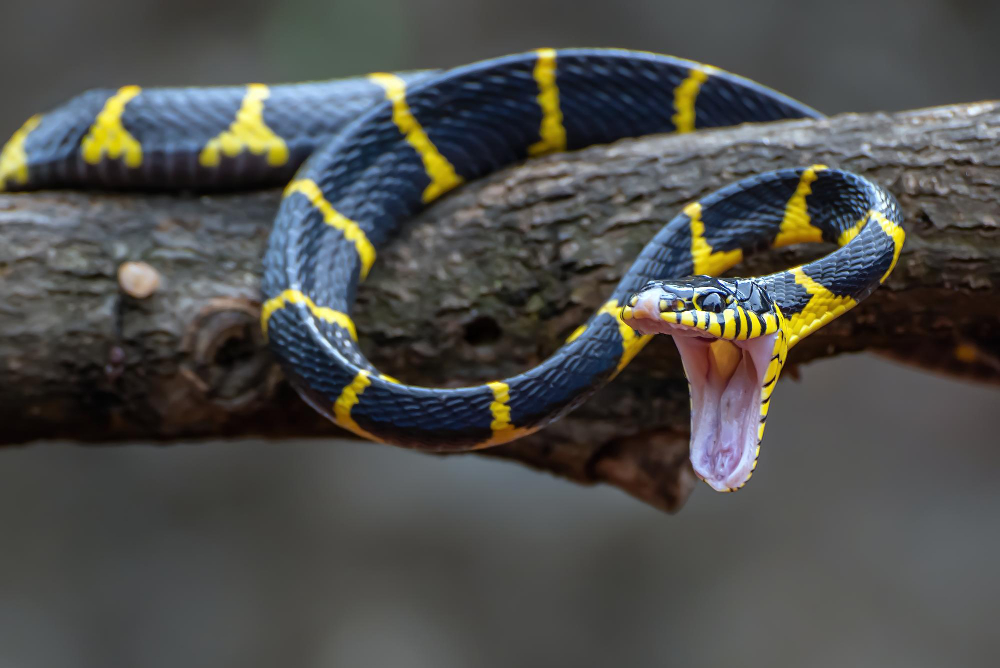In recent years, we’ve seen a disturbing uptick in incidents involving our beloved pets – dogs and cats – and venomous creatures. This trend is largely attributed to rising temperatures, underscoring the importance of recognizing clinical signs and knowing how to respond in such emergencies.
Understanding the Threat: Venomous Creatures and Their Impact
Before we delve into the specifics, it’s crucial to comprehend what venomous animals are and how they operate. Venomous creatures are those that produce a toxic substance within their tissues, which is then delivered through specialized glands. This is distinct from poison, which is a harmful substance that can be ingested or absorbed.
The primary forms of attack we see are bites from snakes, bees, and spiders. However, it’s important to remember that frogs and scorpions can also pose a significant threat. These animals don’t attack out of malice; they strike when they feel threatened. In incidents involving dogs and cats, the animals likely felt threatened by the pet’s presence and reacted defensively.
The Usual Suspects: Common Venomous Creatures
Venomous animals are abundant and diverse, but the most frequent culprits in pet-related incidents are bees, snakes, spiders, frogs, and scorpions.
Bees, often perceived as harmless, can cause serious issues, especially when multiple stings occur simultaneously, leading to swelling and potential airway obstruction.
Spiders, with their painful bites and stress-induced hair expulsion, can cause hives, leading to significant discomfort and potential respiratory issues.
Scorpions, while their stings cause intense pain and localized redness, are usually not fatal. However, for pets with heart conditions, a scorpion sting can be lethal.
Snake venom typically results in localized swelling, pain, and in some instances, paralysis. Conversely, frog venom can lead to excessive salivation, pupil changes, and convulsions.
Recognizing the Signs: Symptoms of Venomous Attacks
The severity and symptoms of venomous attacks depend on the offending species, the type of venom, and the pet’s physiological response. Recognizing the main clinical symptoms is crucial.
Typical symptoms include localized swelling, pain sensitivity, bleeding at the bite or sting site, weakness, depression, respiratory issues, and an increased heart rate. In more severe cases, symptoms may escalate to bleeding gums and nostrils, blood in the urine, pulmonary edema, and affected blood pressure.
Responding to Venomous Attacks: What to Do
Accidents often occur due to the innate curiosity of pets, particularly puppies, and can happen anywhere, especially in open areas like gardens and parks. If you suspect or confirm a venomous attack, it’s vital to remain calm. Do not attempt to remove the venom, as this could exacerbate the situation.
The most critical step is to immediately transport your pet to the nearest veterinarian, providing as much information as possible about the incident and the attacking species. If possible, take photos to help identify the species, as this can expedite treatment.
Upon arrival, the veterinary professional will assess your pet’s condition, primarily using the information provided, clinical signs, and diagnostic tests. In cases of trauma or deep wounds, X-rays and ultrasounds may be requested. Typically, pets involved in venomous attacks are hospitalized due to the acute nature of the symptoms and the need for tailored treatments.
Preventing Venomous Attacks: Safety Measures
Prevention is always the best strategy to avoid venomous attacks. Here are some simple measures to consider:
- Maintain Cleanliness: Regularly clean your pet’s environment and avoid clutter. Venomous creatures often inhabit dark places with garbage accumulations.
- Seal Gaps: Cover gaps in doors, windows, and drains with screens to prevent creatures from entering and nesting.
- Keep Grass Trimmed: If you have a yard, keep the grass cut and free of excess leaves to prevent organic matter accumulation.
- Avoid Waste Accumulation: If you’re renovating, avoid piling up waste and construction materials. Clean your yard promptly.
- Use Leashes: Always leash your dogs during walks to prevent them from coming into contact with venomous creatures.
- Limit Access to Risky Areas: Don’t let cats roam the streets unsupervised. Keep dogs on leashes in parks and trails.
- Pest Control: If you find a venomous creature in your home or backyard, consider professional pest control.
By taking these precautions, you can significantly reduce the risk of venomous attacks on your pets.
Conclusion
In conclusion, the increasing encounters between our pets and venomous creatures are a cause for concern. As pet owners, it’s our responsibility to understand the threats posed by these creatures, recognize the signs of venomous attacks, and know how to respond effectively. The knowledge of the common culprits, their venom effects, and the symptoms they cause in our pets is crucial in ensuring the safety and well-being of our furry friends.
Moreover, prevention remains the most effective strategy in mitigating these risks. By maintaining cleanliness, sealing gaps, keeping grass trimmed, avoiding waste accumulation, using leashes, limiting access to risky areas, and considering professional pest control, we can create a safer environment for our pets.
In the face of rising temperatures and the consequent increase in venomous creature encounters, let’s arm ourselves with knowledge, vigilance, and preventive measures. After all, the safety of our pets is in our hands.

